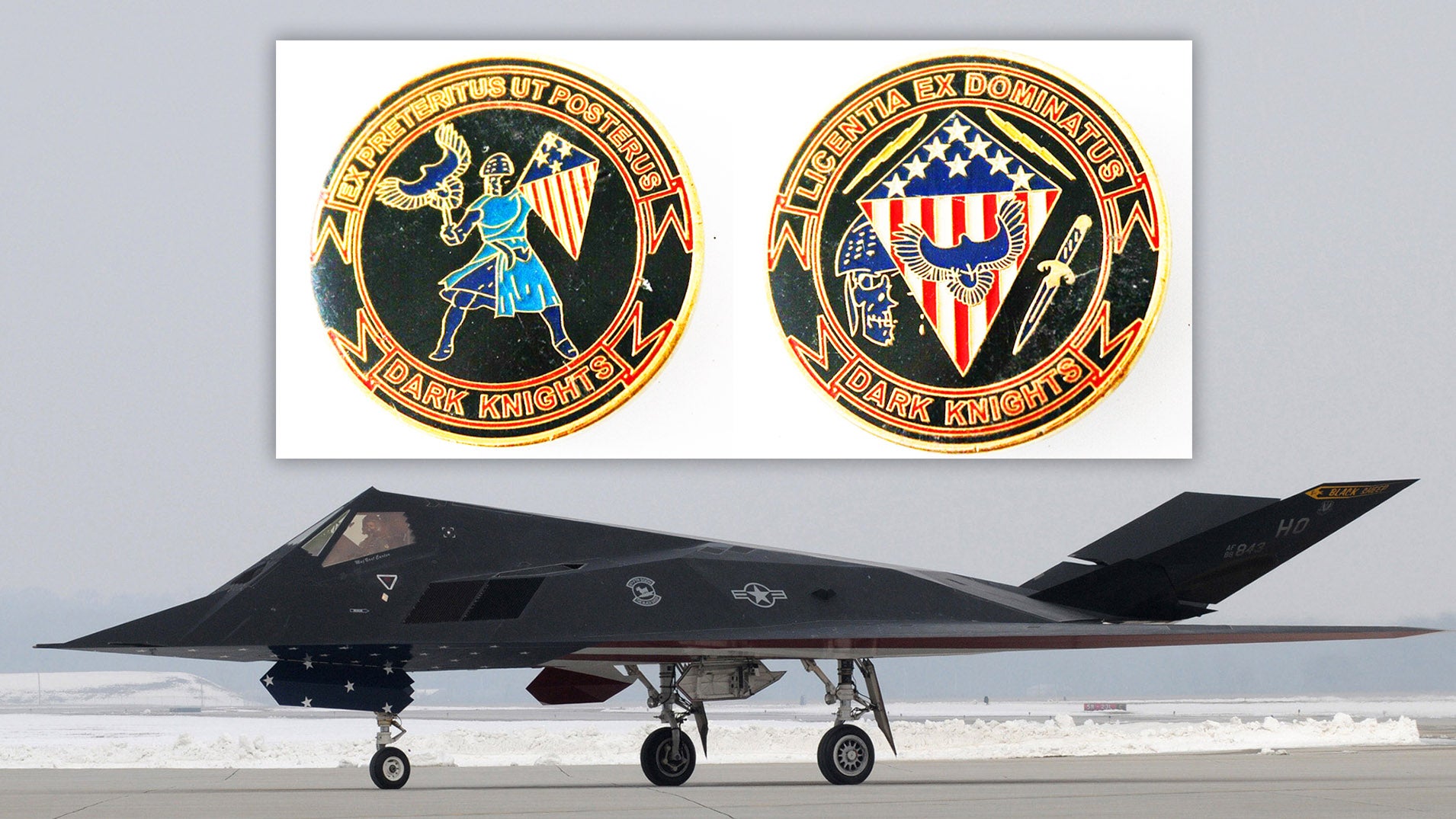Challenge coins have emerged for sale online that appear related to a secretive cadre of F-117 Nighthawk stealth attack jets still operating from the Tonopah Test Range Airport. Despite the Air Force officially retiring these aircraft more than a decade ago, a number of them have continued to fly, ostensibly for research and development purposes. In recent years, they have been increasingly spotted acting as “red air” aggressors during a variety of exercises, as well.
There are currently at least two listings for these challenge coins on eBay. The coin’s design features a scroll motif along the bottom edge on both sides with the words “Dark Knights” in black letters outlined in red. If the coins are indeed authentic, that phrase, plus other details, points to the elements of the Air Force that continue to operate the F-117.
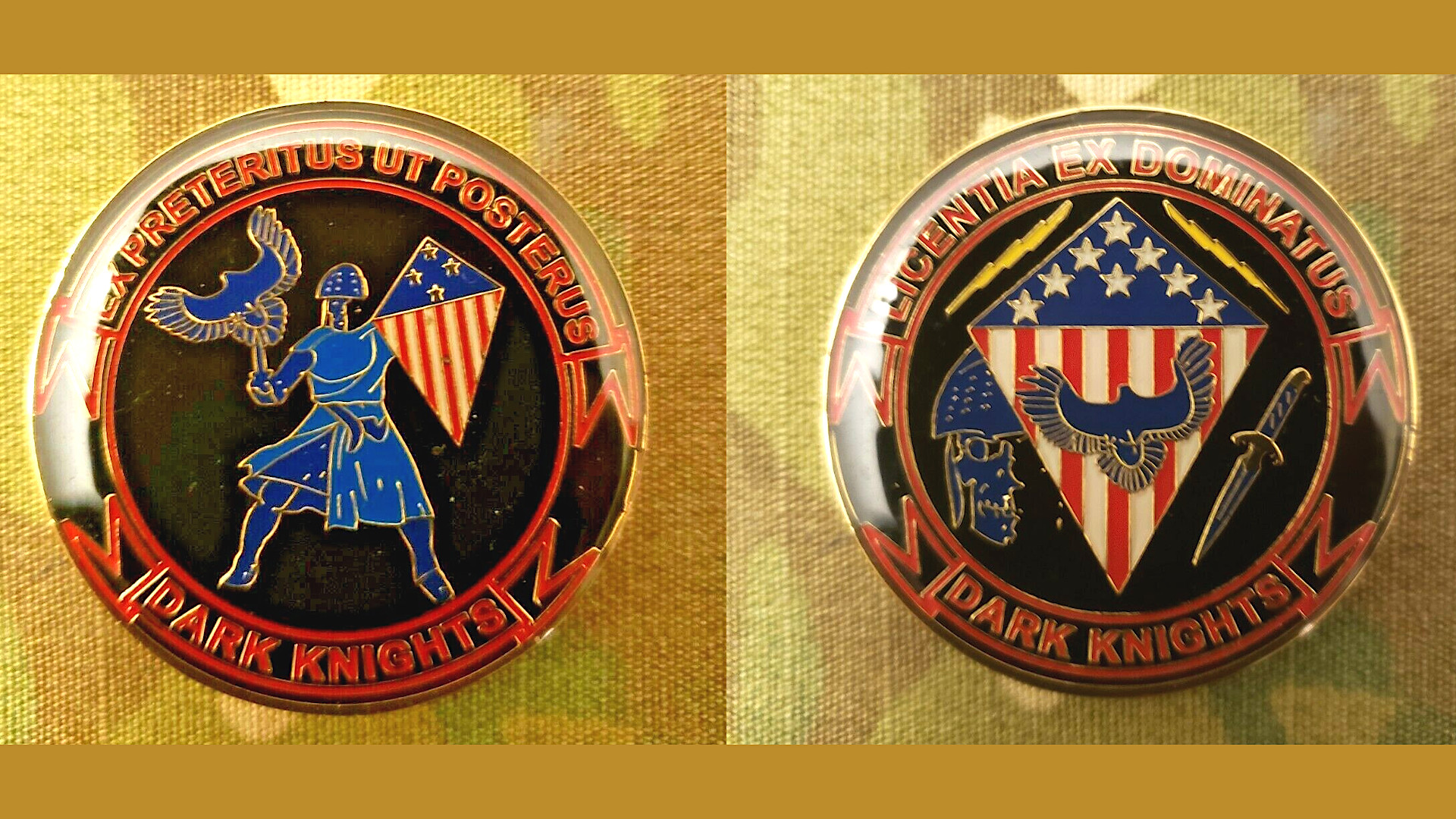
One side has the Latin phrase “Licentia Ex Dominatus,” meaning “freedom from tyranny,” again in black-and-red letters inside another scroll at the top. In the center, there is a diamond-shaped shield with an American flag motif, with 13 stripes, but only eight stars, and what appears to be a bird of prey in the center. Along the top edges of the shield are what look to be a pair of yellow lightning bolts. Along the left bottom edge is a blue skull wearing some form of classical military helmet, while there is a dagger or short sword on the opposite side.
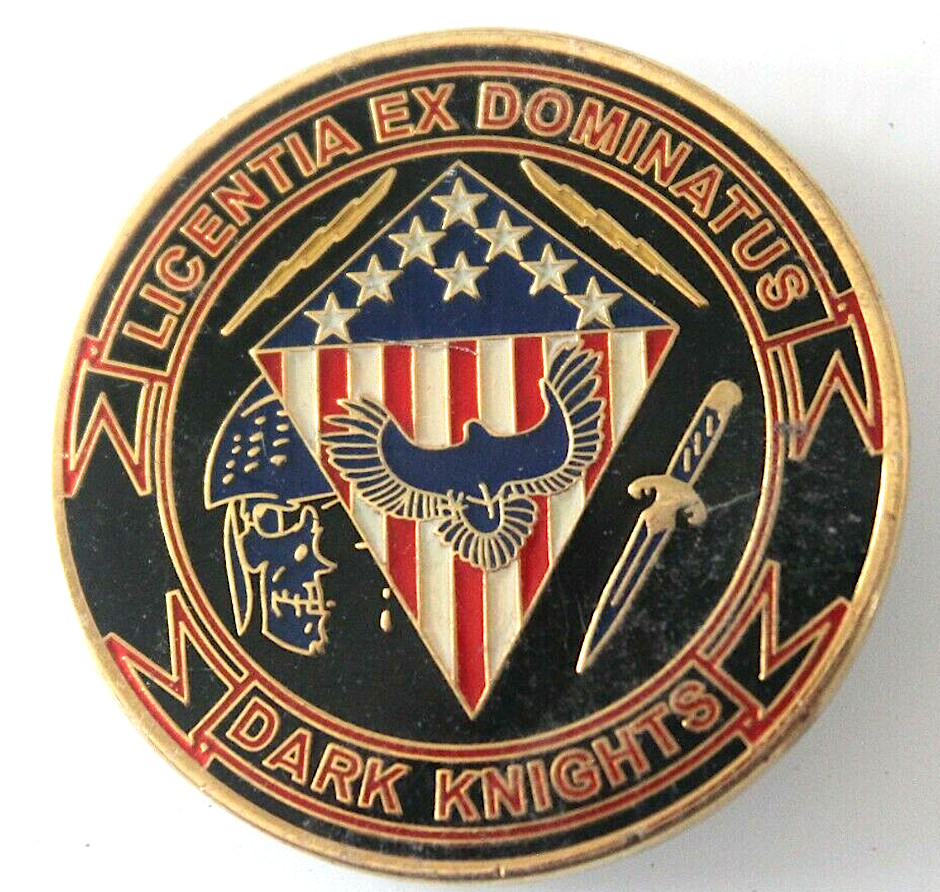
The other side of the coin has a different Latin phrase in the scroll at the top, “Ex Preteritus Ut Posterus,” which appears to mean “from the past to the future.” One seller on eBay also suggested it could mean “learn in the present from the past.” The center features the blue bird again, but also depicts a full skeleton-faced warrior from the other side of the coin, holding the star-spangled diamond shield, this time with only four stars, and holding the dagger or short sword.
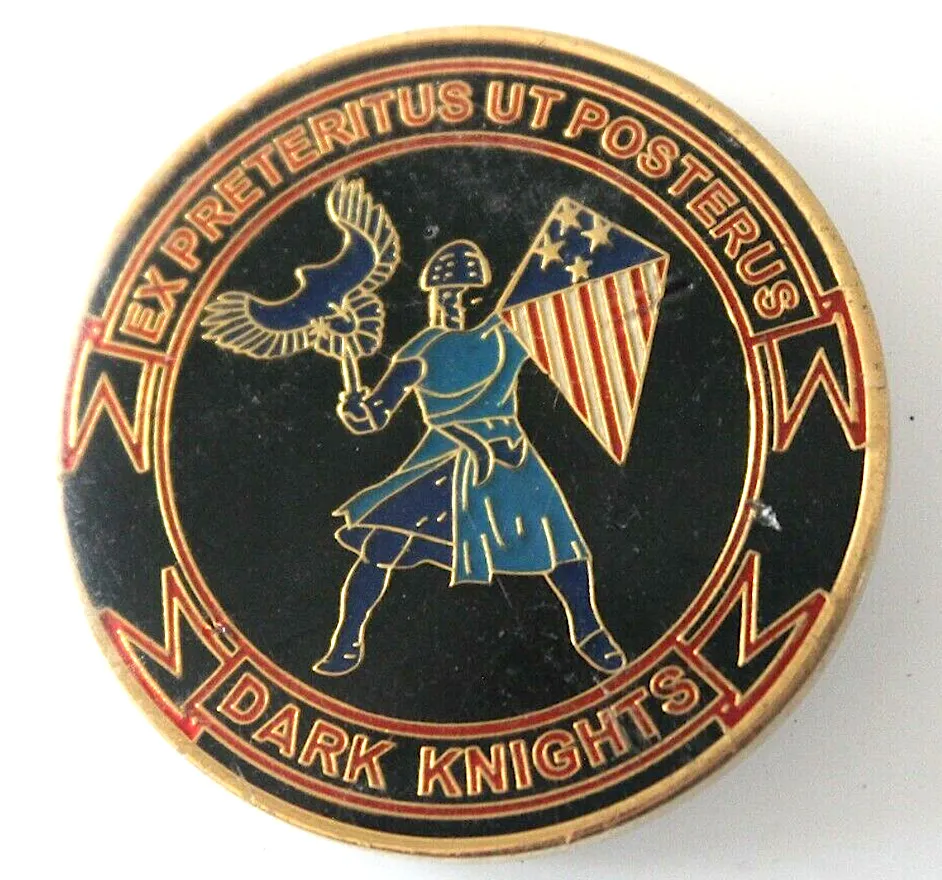
The coins do not expressly mention the F-117 or show silhouettes of the plane. However, the birds of prey on both sides are very reminiscent of hawk logo seen on Nighthawk program patches and ones associated with units that subsequently flew the aircraft during its official operational career.
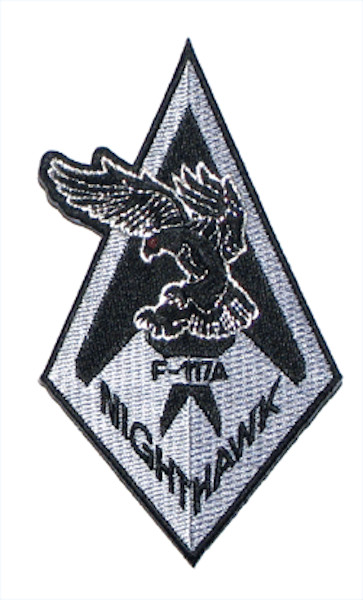
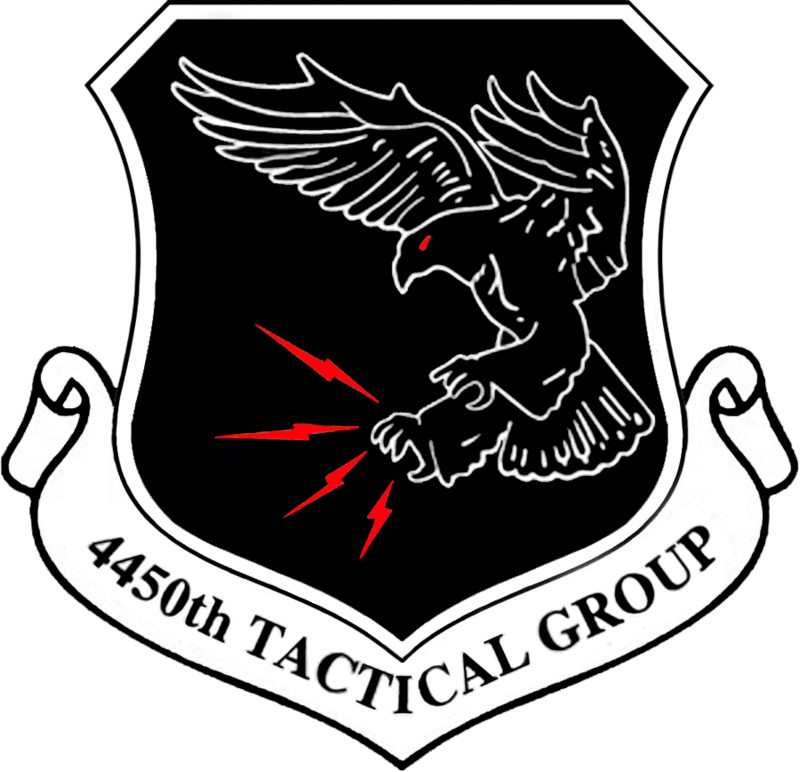
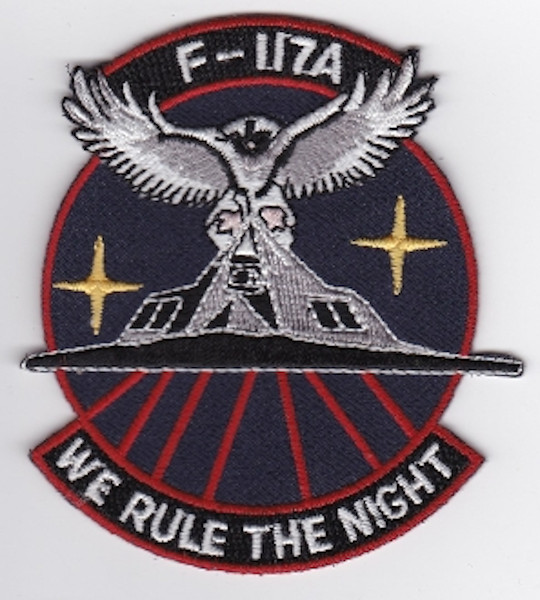
The four stars on the shield on the one side might also be a reference to the first flight of the F-117, which occurred on June 18, 1981. This year marks the 40th anniversary of that milestone and these coins only just recently appeared online. Challenges coins are often produced for and distributed at special events to mark important achievements or other milestones, among other occasions.
The “from the past to the future”/”learn in the present from the past” Latin motto on the one side of the coin would also fit well with how the Air Force is using its pocket fleet of still-flying F-117s. As The War Zone has highlighted multiple times in the past, the F-117, while now a dated design, still offers a very valuable stealthy dissimilar target to train and test new sensors against, among other things.
In addition, an F-117 was spotted flying over the Mojave Desert in 2019 with “Dark Knights” written on a flash on its tail. It was unclear at the time what the exact meaning behind this might have been, but The War Zone
noted, among other things, that the 9th Fighter Squadron, a former Nighthawk unit, had the nickname the “Flying Knights” and had previously been known as the “Iron Knights.” F-117 pilots have near-exclusively used “Knight” callsigns for years, well before the appearance of the tail flash. In addition, it is worth noting that there is a unit at Keesler Air Force Base in Mississippi, the 338th Training Squadron, which is officially nicknamed the “Dark Knights,” but that is a non-flying unit responsible for training airmen in “radio frequency transmission, airfield systems, ground radar, and cyber transport.”
Perhaps the most significant link between these coins and the still-operated F-117s were crests seen painted just behind the right engine intakes on two Nighthawks that Joerg Arnu, who runs the great website Dreamlandresort.com, photographed flying near Coyote Summit in Nevada earlier this month. There are very strong visual similarities between what we can see of those logos in the pictures and the design of the “Licentia Ex Dominatus” side of the coins.

This all adds further evidence that the Air Force has formally re-established a unit of some kind dedicated to the continued operation of at least some of the remaining F-117s in the aggressor, research and development, and other support roles. That would be in line with other evidence that the service has significantly expanded the use of this “post-retirement” Nighthawk fleet, including clearing them earlier this year to refuel from any standard KC-135R tanker, rather than force them to continue to rely on a very small number of NKC-135R test tankers.
In addition, satellite imagery that The War Zone obtained last year showed evidence of a major event at Tonopah in September that looked to include photoshoot in front of an F-117. This could have been arranged in order to get a commemorative group shot of personnel assigned to Air Force’s current Nighthawk unit.
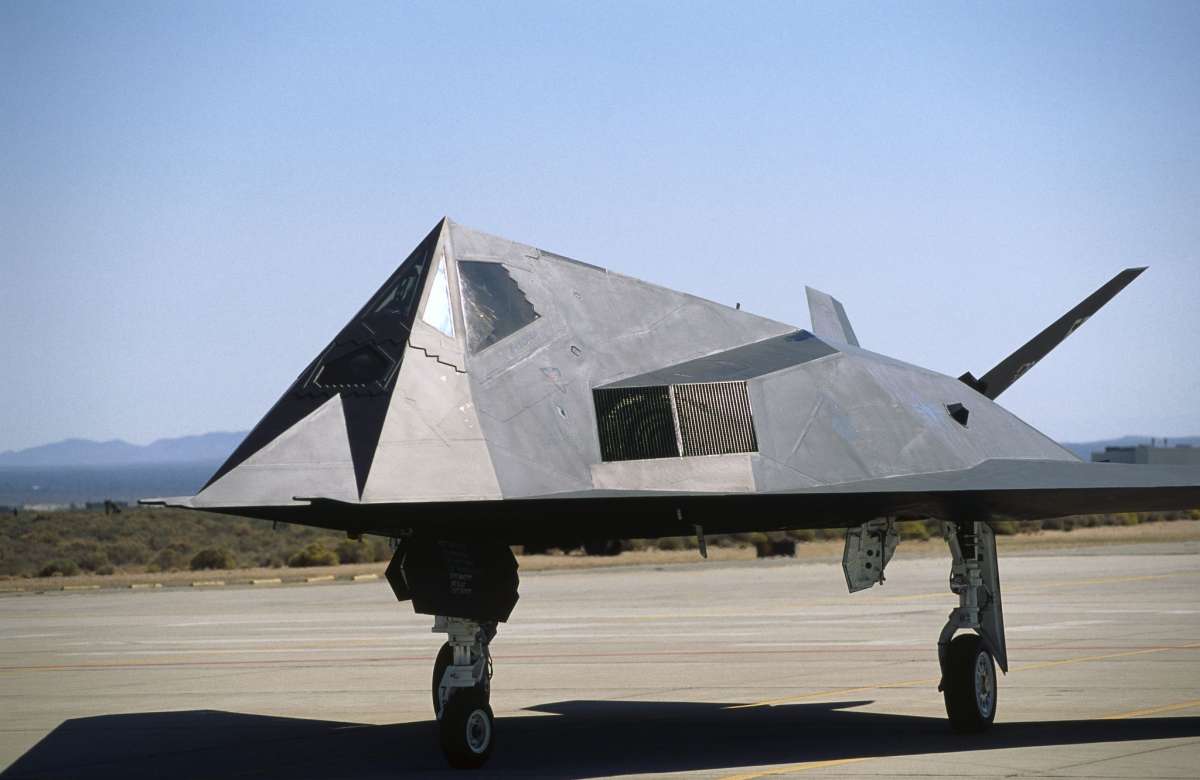
The remaining operational F-117s might be part of a larger airborne signature evaluation entity, too, which could also include the Air Force’s secretive NT-43A flying signature measurement aircraft. The NT-43A, also commonly referred to by its callsign “RAT 55” is a heavily modified Boeing 737-200 that is known to routinely operate from Tonopah, as well as Area 51.
“The Air Force retired the F-117 from active service, but pilots from the Air Force Test Center still fly them for limited research activities,” the service had told The War Zone in a statement earlier this year. This was effectively identical to what we were told back in 2019 when we were first to report on who was still flying these jets and why, at least officially.
As more information about Air Force’s ongoing activities utilizing the F-117 continues to emerge, hopefully, we will learn more about the “Dark Knights” unique story.
Special thanks to Ian EG Smith for bringing these coins to our attention.
Contact the author: joe@thedrive.com
